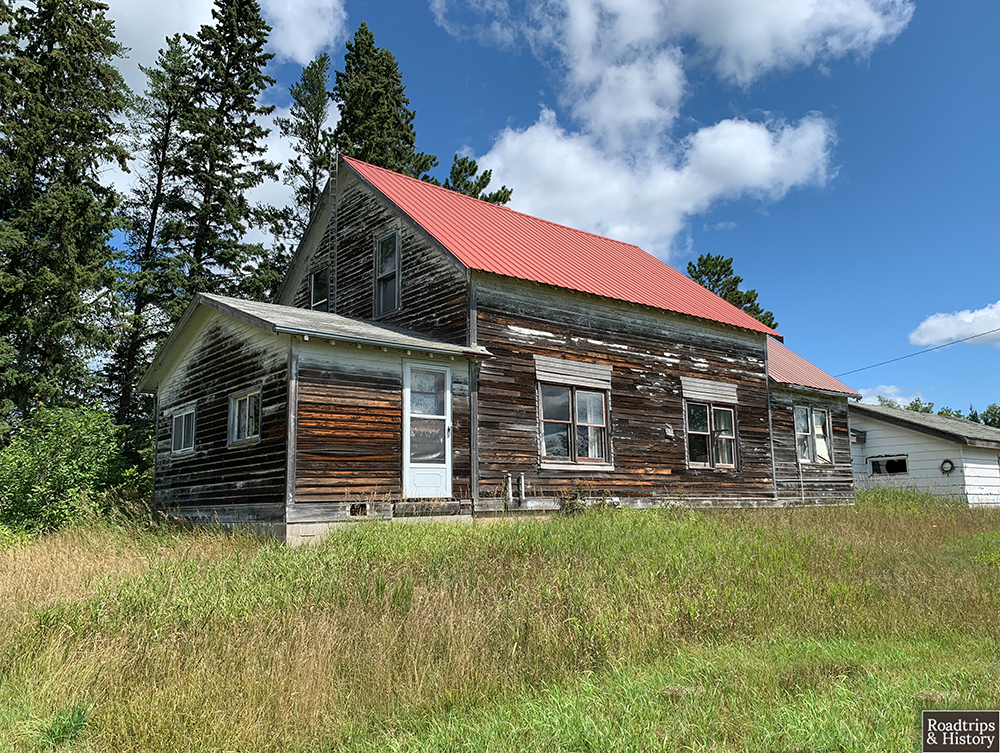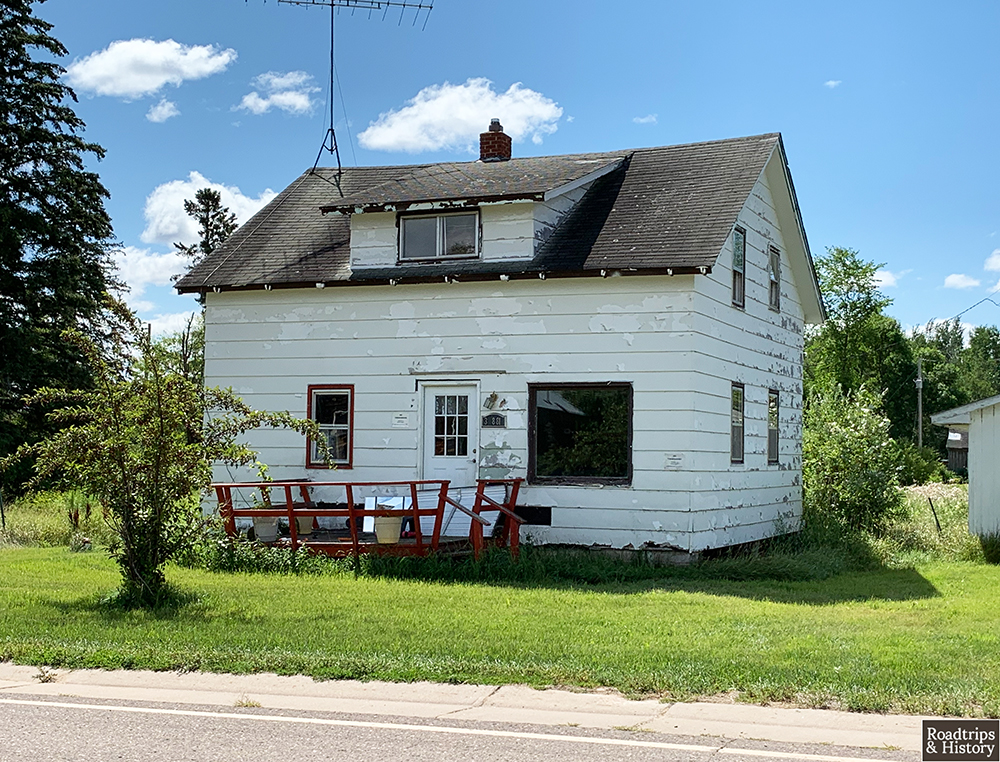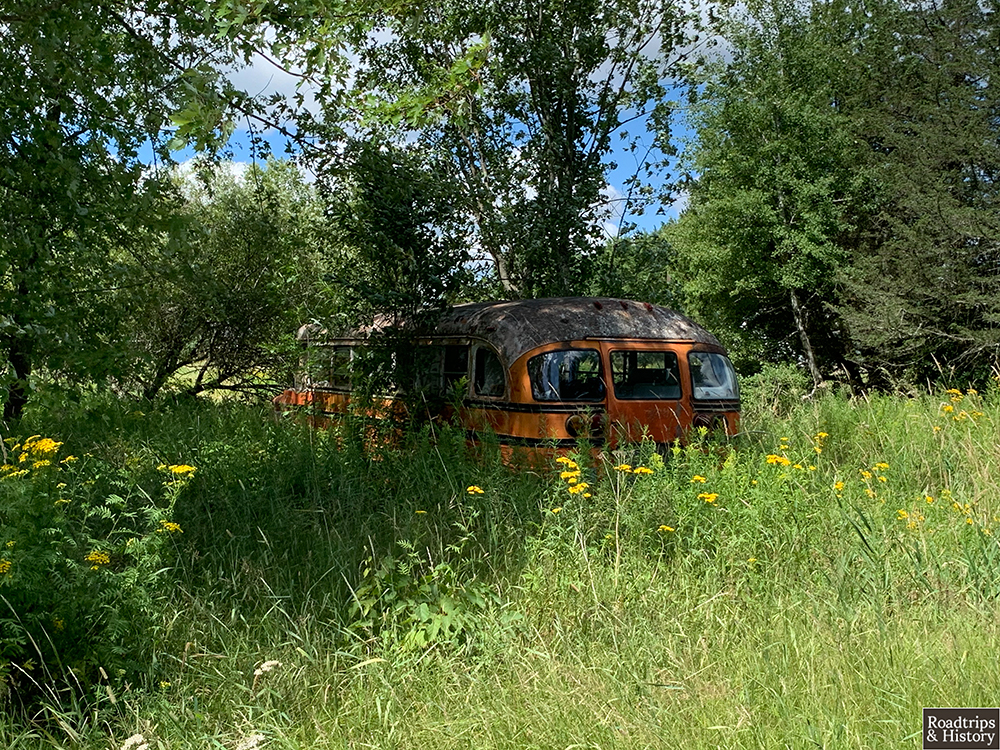Swatara, Minnesota, started out as a logging town when several logging companies moved into the area in the 1880s. By 1900, people started settling in Swatara and building permanent houses. A post office was established in 1903 and the Soo Line Railroad came through town in 1910. Soon, there was a school, grocery and hardware stores, a modest depot, a community hall, plentiful lumber yards, a hotel, and many new homesteads. In 1912, the town’s first baseball team was established and played against teams from nearby Palisade, Haypoint, Shovel Lake, and Hill City.
Today, the town retains some of the fabric of its early days. You can still find the general store, the hardware/lumber store, the school is still there, and many of the homes located off of the main drag. Many of the old farmsteads outside of town date back 90 years or more. There’s no gas station or restaurant in town, and the former rail line is now an ATV trail. But there’s just enough left to kickstart thoughts about what Swatara must have been like 100 years ago. Let’s take a look at what I found here when I drove through town in 2020.
Swatara General Store
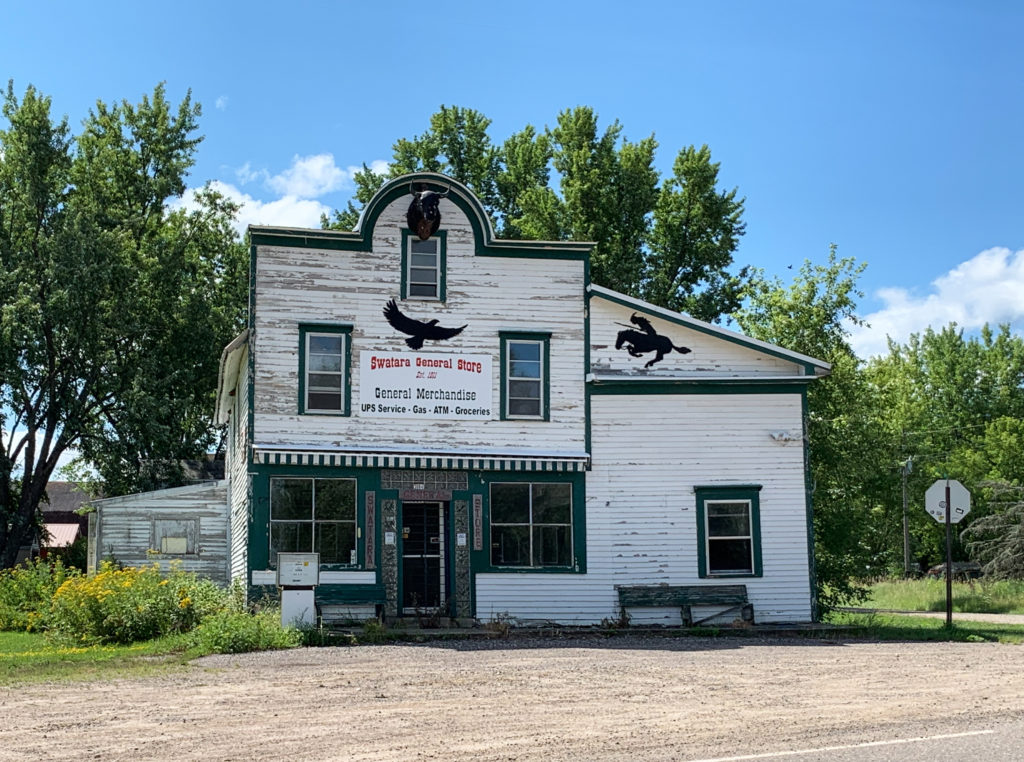
The first general store in Swatara was built in 1910 by Frank Trepanier, a French-Canadian immigrant. Before building the store, he sold dry goods out of a railroad boxcar. The first store quickly became too small to keep up with demand, so Trepanier built this larger store in 1911. He ran a pool hall in the basement and eventually added a gas pump outside. Frank retired from the grocery business in 1930, and his son George continued to operate the store for many years. The old store is currently listed for sale.
Heath Brothers Store
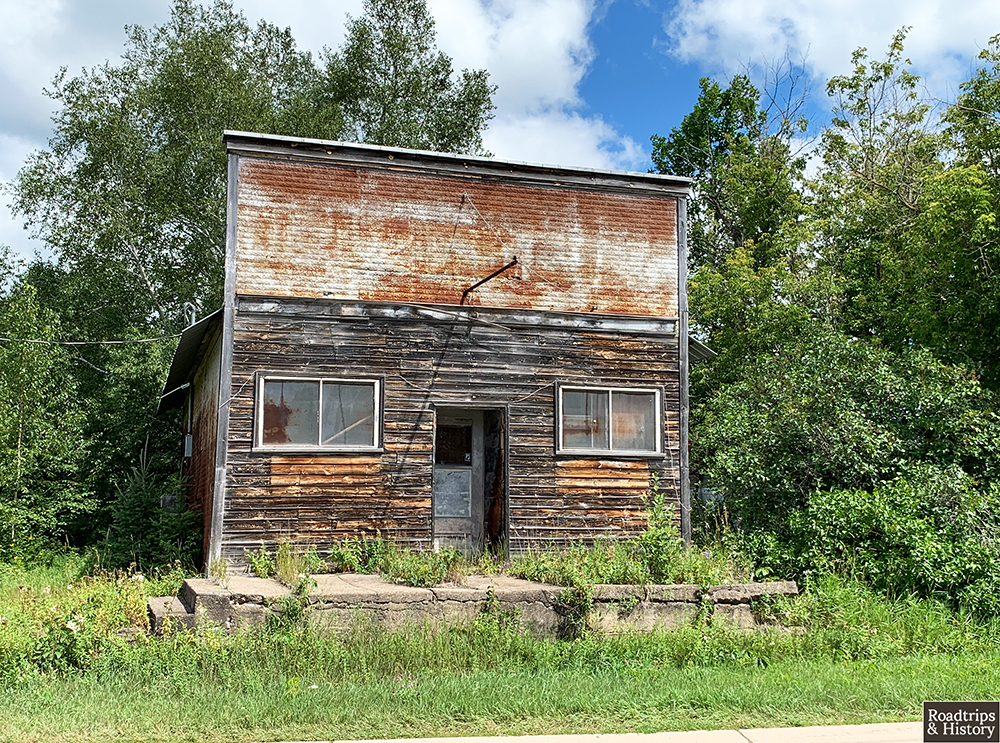
Art, Earl, and Harvey Heath opened this store in 1911. It appears that they specialized in selling lumber, wood products, caskets, and hardware.
Swatara Consolidated School
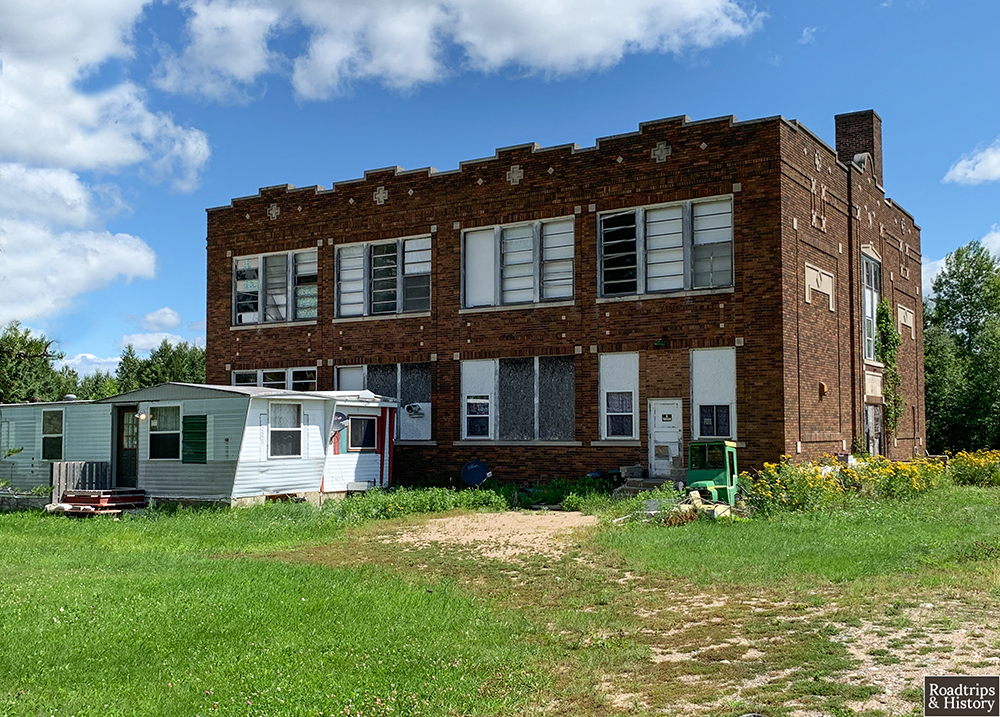
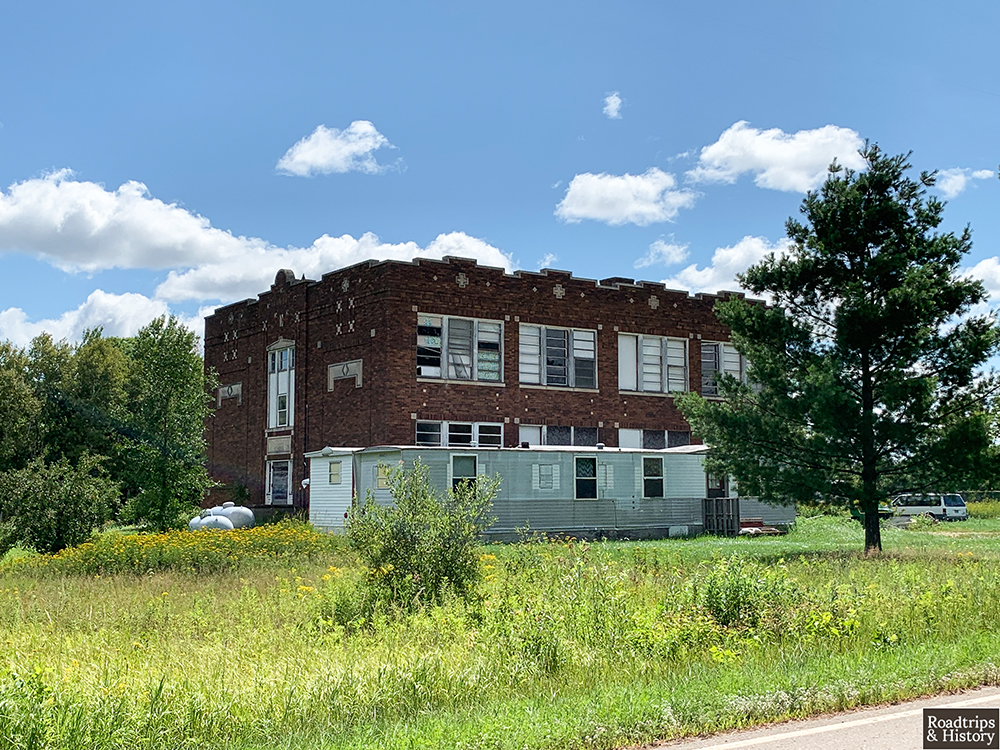
Swatara Consolidated School was built in 1921 to replace two smaller schools in the area. For many students, this was their first time riding a school bus from their home to school. Many remember that it seemed to take forever to make all of the stops since homes were spaced so far apart. But it was better than walking! The large brick building was built with a half basement that housed a small power plant running on a gasoline engine. There were a total of four classrooms, with a library and auditorium on the first level. By 1925, the low enrollment of older students left the district with no choice but to integrate the high school students into Hill City High School. It was cheaper than paying a teacher to educate one or two teenagers. Over the next five decades, enrollment at the school managed to just squeak by the minimum needed to keep the school open. In the 1970s, enrollment bottomed out, leaving the district with little choice but to merge with Hill City. This allowed the school to be used as an elementary school for students in Swatara and Hill City until 1983 when the Hill City School was completed.
More From Swatara
